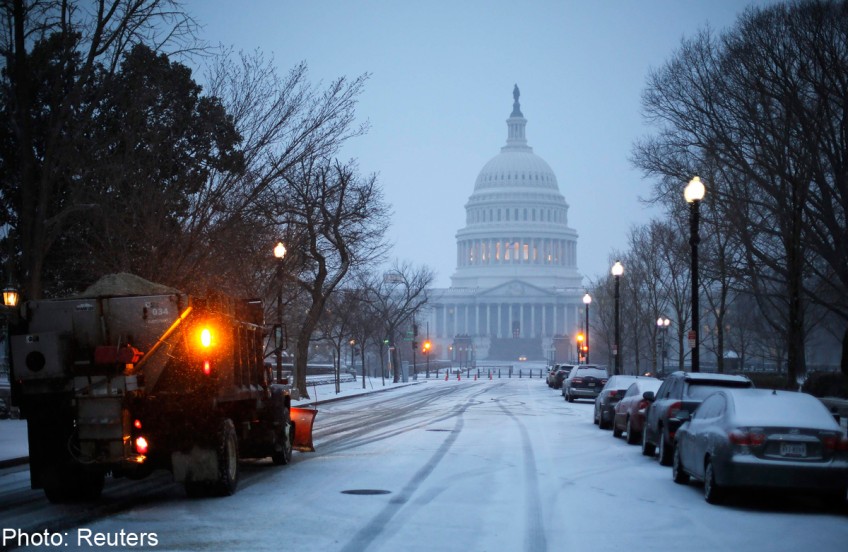Cuba interests section in Washington rich in history

WASHINGTON - It looks like just another stately mansion on the street leading up to the White House. But the Cuban Interests Section in the US capital is a rich symbol of decades of snarled ties.
Its destiny is to become Cuba's embassy, now that the countries have announced they will bury half a century of Cold War enmity and restore full ties.
From the outside the look is discreet - no revolutionary flags, no banners, and no police.
On the wrought iron fence is a small plaque that says Cuba's official presence in the US falls under the protection of the Embassy of Switzerland.
But the edifice, tucked between the embassies of Lithuania and Poland, is one of the most enigmatic buildings in the US capital.
The three-story limestone structure was erected in 1916 to serve as the "Legation of the Republic of Cuba." It began operating the following year.
A drink with Hemingway
On the ground floor are six side doors, each with a coat of arms of one of the six provinces into which Cuba was then divided: Pinar del Rio, La Habana, Matanzas, Santa Clara, Camaguey and Oriente.
Smack in the middle is a spectacular marble staircase leading up to the main ceremonial hall. And to the side, lo and behold, is a small bar, named after Cuba's adopted literary son - Bar Hemingway. Entrance is strictly by invitation only.
In 1923 the building was elevated to the category of embassy, and over the years it welcomed several visiting Cuban presidents.
A photograph from 1927 shows then president Calvin Coolidge posing with his Cuban counterpart Gerardo Machado at the steps of the embassy, both in dark suits and impeccably shined shoes.
Fidel Castro visited Washington in April 1959 - though not at the invitation of the US government - four months after leading the Cuban Revolution. He toured the embassy briefly and gave a few interviews.
When the US severed relations with communist Cuba in January 1961, the building had already undergone a remodeling a few years earlier. But from that point on it took on an air of mystery.
Timid reopening
In 1977, the United States and Cuba reached an agreement to open interests sections in each other's capitals.
Thus, the old embassy on 16th Street in downtown Washington re-opened, as did a US diplomatic office in Havana.
Although the Cuban building was under the protection of the Swiss, that did not spare it from the ire of radical anti-Castro Cuban groups.
On June 8, 1978 an armed Cuban group known as CORU hurled an explosive device at the building. But the worst attack came a year later when another group, called Omega 7, detonated a bomb in the back of the structure.
The last major protest outside the Cuban interests section came in 2000, when the United States and Cuba engaged in a lengthy tussle over a Cuban boy named Elian Gonzalez, who was in the custody of Cuban relatives in Miami.
These days the Cuban Interests Section boasts just seven diplomats.
"If you count all the employees, including drivers, secretaries and accountants, and their families and children, there are fewer than 100 of us," said a source at the interests section, speaking on condition of anonymity.
When the United States and Cuba finally restore diplomatic relations - talks have already begun since the historic announcement in December - the mansion on 16th will once again become an embassy.
Until then, staff movement is restricted to the Beltway highway that encircles the city and a corridor to Dulles International Airport.